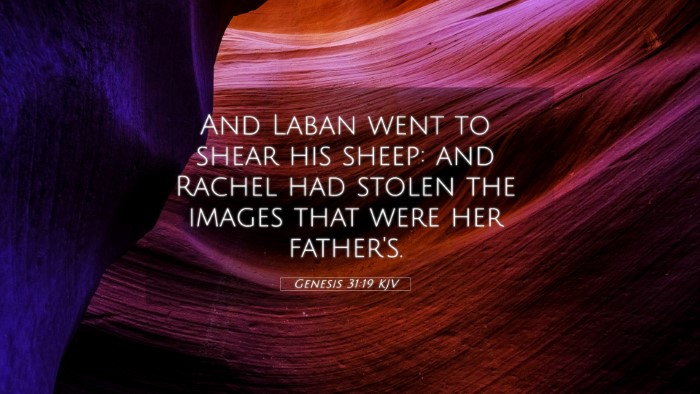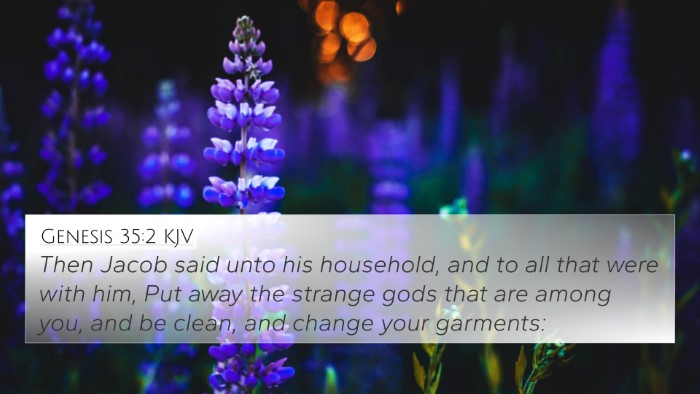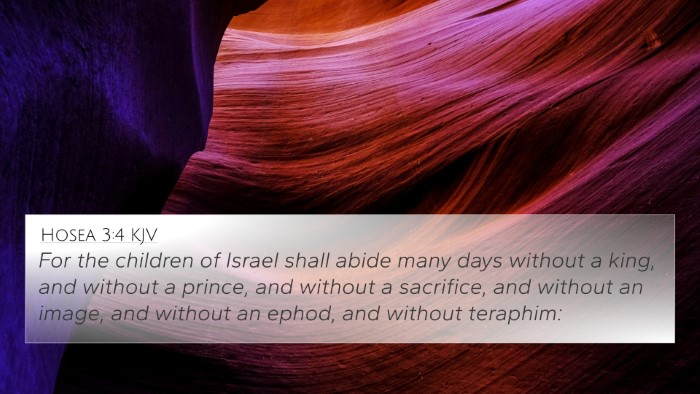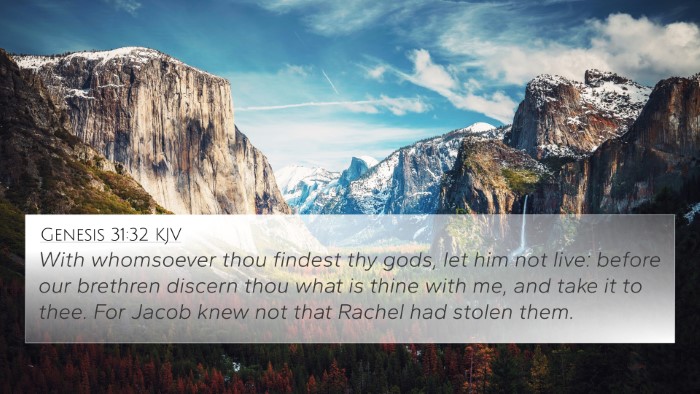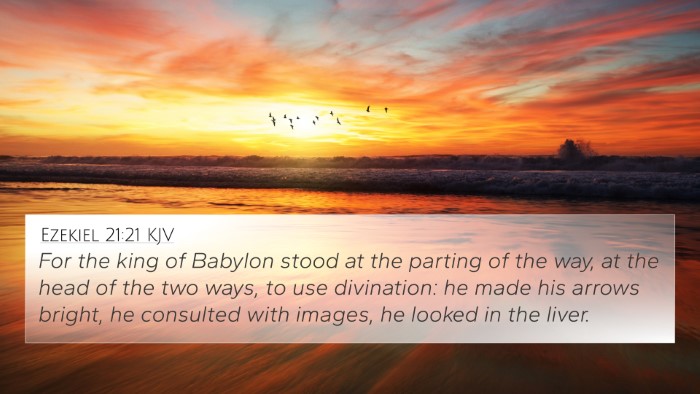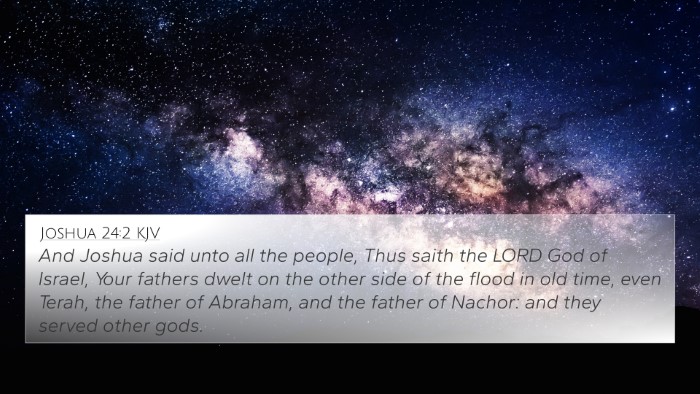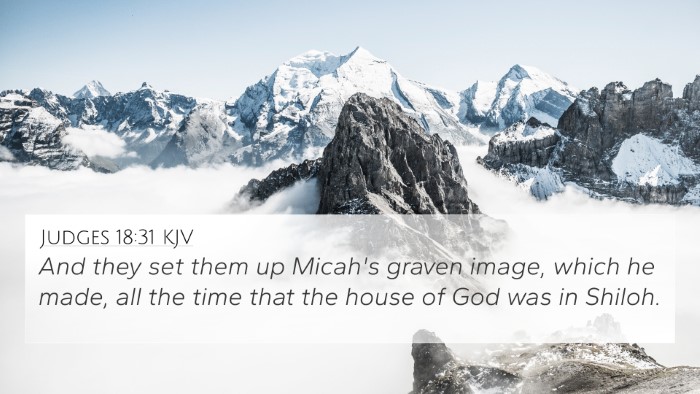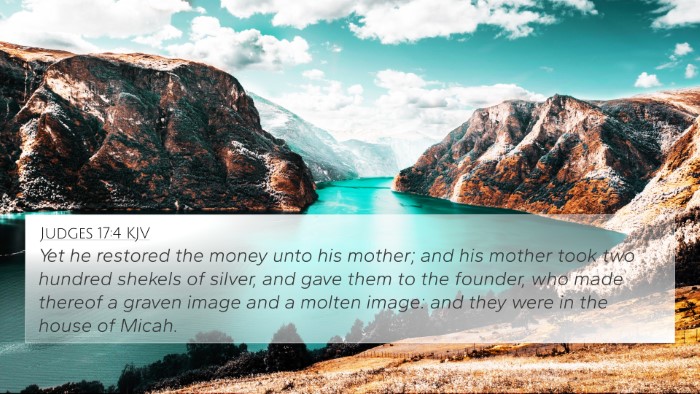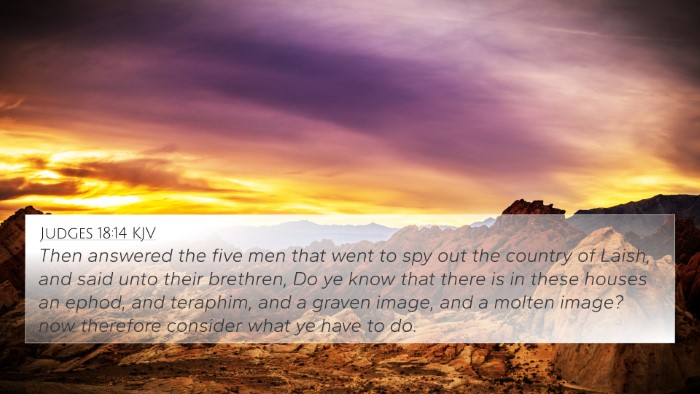Meaning and Interpretation of Genesis 31:19
Genesis 31:19 states: "And Laban went to shear his sheep: and Rachel had stolen the images that were her father's."
This verse provides critical insight into the unfolding narrative of Jacob's departure from Laban and hints at the deeper familial and spiritual tensions present in the text. The actions of Rachel, Laban's daughter, are laden with significance, and various public domain commentaries shed light on this verse's multifaceted meaning.
Summary of Insights from Commentaries
-
Matthew Henry:
Henry points out that Rachel's theft of the household gods—often called teraphim—signifies a desire for spiritual assurance and an acknowledgment of Laban's idolatrous practices. Rachel's act indicates her complex relationship with her family's idolatry. It serves as a reminder of the conflicts between faith and heritage, suggesting a critique of Laban's household.
-
Albert Barnes:
Barnes discusses the implications of household gods in this verse, arguing that Rachel's motives were not merely theft but an assertion of her strength and identity within a patriarchal framework. By taking the images, she attempts to assert control over her legacy and suggests an underlying tension between belonging and independence.
-
Adam Clarke:
Clarke analyzes the cultural context, considering that Rachel's actions represent a desire for security during a turbulent time. He emphasizes that the teraphim were often seen as protectors of the household, indicating a superstitious reliance on these items. Consequently, their theft may reflect a rejection of Laban’s household but an incomplete severing of ties with idolatry.
Thematic Cross-References and Connections
Genesis 31:19 invites a comparative analysis with several Bible verses that explore related themes of idolatry, familial conflict, and divine protection. Below are some key cross-references:
- Exodus 20:4-5: Prohibitions against idolatry highlight God’s command regarding the worship of images.
- 1 Samuel 15:23: Discusses rebellion as akin to witchcraft, reflecting on the seriousness of turning to idols.
- Hosea 4:12: Illustrates Israel's tendency to consult wooden idols, linking back to Rachel's actions.
- Romans 1:23: Addresses the exchange of God's glory for images, drawing parallels to Rachel’s attraction to the teraphim.
- Matthew 6:24: "No man can serve two masters" emphasizes the conflict between God and other false idols, much like Rachel's struggle.
- Revelation 21:8: Highlights the fate of idolaters, signifying the severe consequences of worshipping false images.
- Acts 19:27: Discusses how the worship of Diana created a rift, paralleling Rachel’s household tensions.
- Jeremiah 10:14: Warns against foolishness in trusting in idols, echoing Rachel's misguided reliance on her father's teraphim.
- Matthew 10:36: Alluding to familial strife when faith leads to division, resonating with Rachel's torn loyalties.
- Genesis 35:2: The call to Jacob to put away foreign gods reveals recurring issues of idolatry in the family.
Inter-Biblical Dialogue
The connections between Genesis 31:19 and the highlighted scripture reveal a complex dialogue throughout the Bible concerning idolatry and family dynamics. These passages collectively illustrate a theological narrative regarding the consequences of straying from faith in God and the spiritual ramifications of familial loyalty to sinful practices.
Tools for Further Study
To delve deeper into the themes presented in Genesis 31:19, one can utilize various tools for Bible cross-referencing:
- Bible concordance for locating similar themes.
- Bible cross-reference guide to uncover thematic links.
- Cross-reference Bible study methods to draw parallels between narratives.
- Bible reference resources to examine the broader context.
Final Thoughts
Genesis 31:19 exemplifies the entangled narratives of family, identity, and spirituality in the Bible. Rachel's complex motivations and actions serve as an illustration of the perpetual struggle against idolatry and a search for divine security. Through cross-referencing relevant verses, one can glean a richer understanding of the biblical text and the enduring relevance of its themes.

